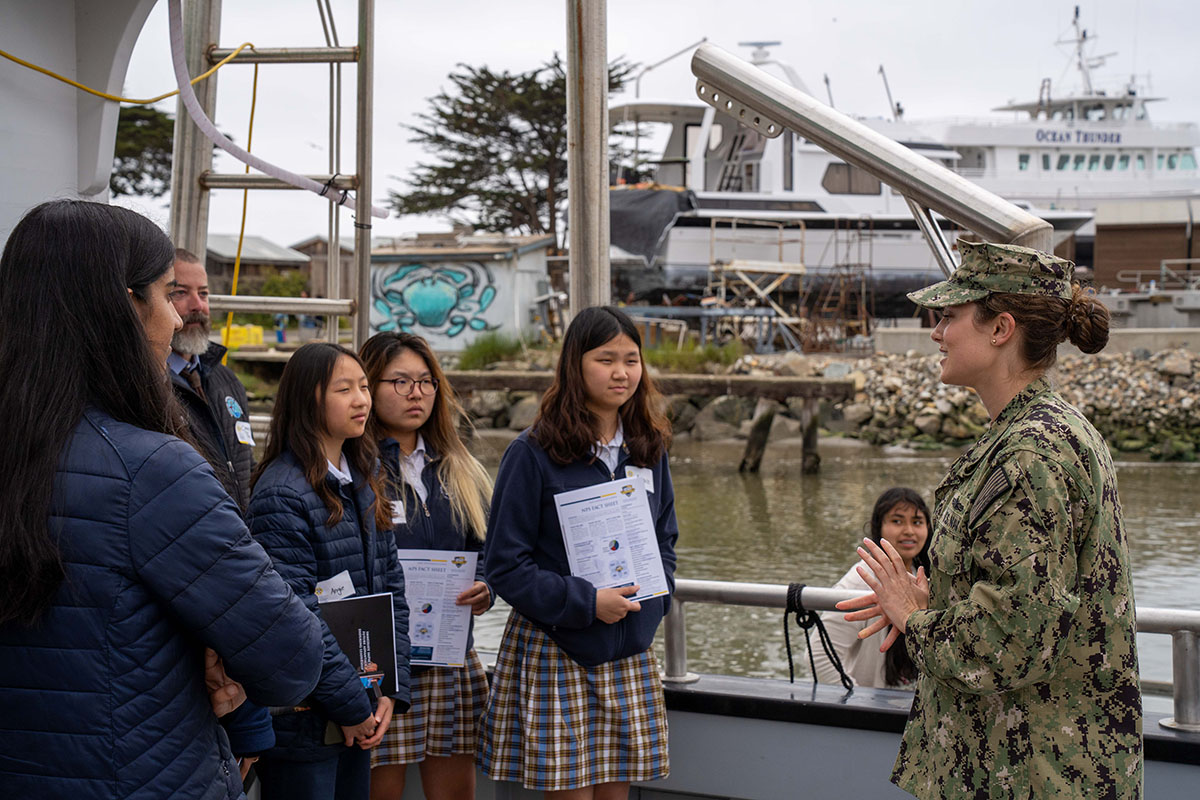Three-Year Program
Students go into the field to gain experience with the scientific process and develop the conceptual and technical skills needed to undertake independent research the following year.
Students undertake a guided independent research project, beginning with the development of a scientific question embodied in a research proposal. Research builds on the practice and fundamentals of science, with special attention paid to literature review and background work.
Students synthesize and communicate the results of their research, including sharing their work with the broader scientific community in a range of venues from science and engineering competitions to professional conferences.

Professional Partnerships
Santa Catalina’s proximity to Monterey Bay means the school also has access to world-class researchers. When developing their independent research projects, students often collaborate with researchers from the Monterey Bay Aquarium Research Institute, Stanford University’s Hopkins Marine Lab, and the Naval Postgraduate School.
(U.S. Navy photo by Mass Communication Specialist 2nd Class Andrew Langholf)
Program Faculty
Dr. Reilly was a marine ecologist before coming to Santa Catalina in 2008. He spearheaded Santa Catalina’s Marine Ecology Research Program, which is one of the reasons he received the school’s Sister Carlotta Distinguished Service Award in 2016. He was also named Teacher of the Month by the American Association for the Advancement of Science in April 2017. Dr. Reilly holds a B.S. from The Evergreen State College, and M.A. in biological science from Boston University, and a Ph.D. in biological sciences from Stanford University. Hailing from the Pacific Northwest, he enjoys surfing and coaching youth rugby, and volunteers at the Pacific Grove Hyperbaric Chamber.
I like being able to teach about research and exploration so close to the margins of the Pacific Ocean, where I find so much scope for both.
Dr. Marrack taught at Santa Catalina from 1998–2001 and returned in 2014. In between, she worked for the National Park Service in her home state of Hawaii, as a USGS contractor focused on coral reefs, and as a UC Berkeley graduate researcher. One of her favorite aspects of teaching is that she can bring this scientific background to her classroom. She holds a B.A. (magna cum laude) from Williams College, an M.A. from Moss Landing Marine Laboratories, and a Ph.D. in environmental science policy and management from UC Berkeley.
Dr. Marrack loves that she and her colleagues have the freedom to take a hands-on approach to teaching—whether surveying the rocky intertidal zone of Monterey Bay, designing projects in the garden, or experimenting in the chemistry, physics, and biology labs. She continues to be involved in coastal ecology and conservation work, and takes time to play in nature through trail running and various ocean activities. She is a member of the resident faculty.
Monterey Bay and the natural world inspire me every day. My ultimate goal as a teacher is to guide my students in discoveries of the living and non-living world around them and to be aware of their place in it.


